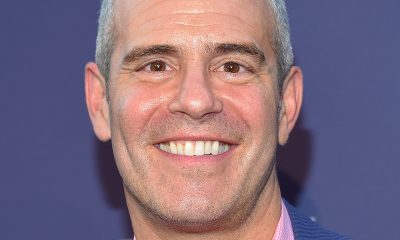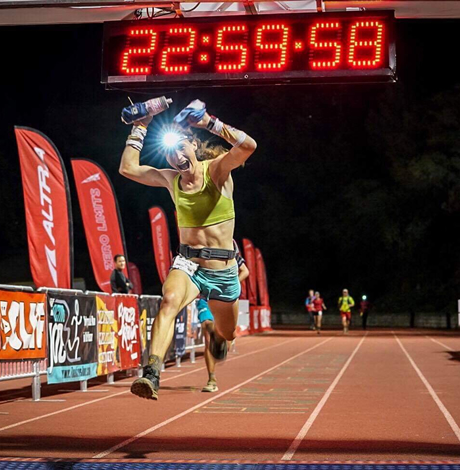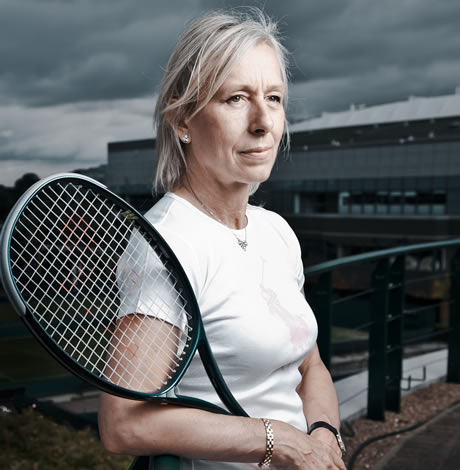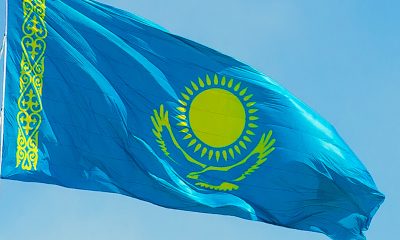Arts & Entertainment
The ‘Real’ deal: An interview with Julia Lemigova of RHOM
Navratilova’s spouse on reality TV, her chickens and Martina’s art

If you’ve managed to avoid watching even a single season of any of the “Real Housewives”shows, you now have a reason to watch. Julia Lemigova, who has been married to Martina Navratilova since 2014 is the first openly lesbian member of the cast in the history of the series. Initially introduced as a friend of “Real Housewives of Miami”cast member Adriana de Moura, the statuesque Lemigova towers over her castmates in more ways than one. She has a wonderful sense of humor, and her self-confidence is palatable. More than just a welcome addition to the cast, her presence is essential to making the show a well-rounded experience. Julia was gracious enough to answer a few questions.
BLADE: Julia, were you a fan of the Real Housewives franchise before you joined the cast of Real Housewives of Miami, now airing on Peacock?
JULIA LEMIGOVA: I had heard about the Real Housewives franchise. I always wanted to find time to watch, but life is busy with me farming or something else. I never watched the show until my dear friend Adriana called me and invited me to try to be her partner on the show. I was so thrilled because my real-life friendship with Adriana is like a show anyway [laughs], so it seemed like a natural fit. That same day, I watched the first season; all the episodes in one day. Then the next day I watched the second season of “Real Housewives of Miami” and the third day I watched the third season, and that’s it [laughs]. I was convinced! I loved it! I became an instant fan. It was like a natural chemistry.
BLADE: I was touched by the story of how you met Martina, to whom you’ve been married since December 2014. Did you do anything special to celebrate your wedding anniversary?
LEMIGOVA: We were actually in the middle of moving houses. We literally moved on that day because everything was kind of going fast and we wanted to get the house to ready for our daughters. So, we haven’t really celebrated. We’re kind of making jokes to each other that here we are moving boxes and packing on our anniversary. But we did open a bottle of something and had dinner. Now that both of our daughters came back from being abroad, we are looking forward to celebrating it together with them. We had a rain check, and we’ll celebrate it all together; Christmas, wedding anniversary, all of it in the new house.
BLADE: Another fascinating detail is the way you talk about how you had been closeted, but that living in Miami has allowed you to be more of yourself. Can you please say a few words about that?
LEMIGOVA: I felt free from the second I stepped onto U.S. soil. Being so shy and introverted about my life while living in Paris and then the first time we went for a vacation to the U.S. in Aspen followed by Miami, it just felt right. We stayed in a small art deco hotel on the beach. I remember having breakfast and looking at people walking, Somehow, I found myself walking around Ocean Drive with Martina, and here I am holding hands with her. I was like, “Oh, my God!” It was something I never ever did in Paris. I love Miami even more for that [laugh]. I’m crazy about it. I said, “Let’s move here.” It was wishful thinking, because back then same-sex marriage was not legal. We had to plan ahead and overcome quite a few challenges.
BLADE: We’re very glad you like it here. You have the distinction of being the first openly lesbian cast member in the history of “Real Housewives.” What does that honor mean to you?
LEMIGOVA: I feel so proud, and I never use this word lightly. Being a visible part of our LGBT community is quite new to me. I would not even try to pretend I am a spokesperson for it, but I’m so happy to be a spokesperson for myself and for my family. I hope that as a family we represent our LGBT community well. I’m thrilled and honored to shine a light on how we live; on our family, and share it with the world, and especially with those who may need it.
BLADE: Episode three of the new seasonincludes scenes from Wynwood Pride. Living in South Florida as we both do, we have multiple Pride festivals, including Miami Beach Pride, Fort Lauderdale Pride, Stonewall Pride in Wilton Manors, Pride of the Palm Beaches, and Key West Pride. Have you been able to partake in the myriad Pride festivals?
LEMIGOVA: Because of COVID, and all the difficulties that come with it, I was not able to participate in that this year, unfortunately, in a lot of Prides that I would have wanted to. However, when I was pregnant with my daughter in 2001, I was there on the street [for Pride] in New York. That was a lot of fun. Then, with Martina, during some of our vacations, we participated in a lot of different LGBT events, and I was a part of Pride in Paris, which was so much fun. Actually, New York again just before COVID started, which was amazing. And then my first time in Miami Pride this year.
BLADE: In addition to living with Martina in Miami Beach, you also have a farm in Broward County. What do you like best about the goats and chickens and all that goes with the farm?
LEMIGOVA: I grew up in Moscow. Every summer my parents would send me to this Russian dacha. Being around animals, farm animals is part of my growing up. It’s who I am. Living in Europe, I could never make this dream happen. In Florida, when we decided to be in Miami, it was such a natural fit. Not only did I feel like I could be me here, be open about how I live, who I am, and my sexuality, but I also realized my second dream, which is to live among my four-legged and two-legged creatures. I have an unusual farm. It is a working farm — it keeps me working [laughs], but it’s more like a retreat. They each have their habitat and I am I am just living with them. I’m part of their life. I talk to them, all of them, even my multiple numbers of chickens. I love milking my goats. Right now, three of them are pregnant, so I’ll have a lot of milk. I cannot wait to start showing my cast-member friends how to make goat cheese. It gives me a sense of kind of belonging, tranquility. What makes it even funnier is that I jiggle between high-heeled shoes and chicken galoshes. I’m comfortable in both [laughs]. I’m at the beach house in high-heeled shoes and I have galoshes in my pickup truck for when I pick up my hay and feed for the animals. Then I join Martina later for some glamorous dinner in Miami Beach.
BLADE: Initially in the first couple of episodes of the new season, you are introduced in the new season of RHOM as “Adriana’s friend.” Having only seen the first couple of episodes, it’s obvious that Adriana is a little bit of a flirt. Do you think that’s an accurate description of your friend?
LEMIGOVA: It’s funny because at first people were saying that I was a flirt. I actually looked up flirtation when people were telling me, “Julia, you are little bit of a flirt.” I hadn’t heard that about Adriana. But now that you’re saying so, I’ll ask her if she was told that as well. When I looked in the dictionary for the exact definition of the word there are lots. The one I found more accurate to me and flirt is like a butterfly. You’re flying from flower to flower. That’s how I interact with people, in general. Men, women, my chickens. Flirt to me is just a way to say I enjoy talking to you. There is no sexual connotation to me at all. It’s just a happy exchange of energy.
BLADE: Well said! In the first couple of episodes, we also learn about Martina’s talent for painting. How important do you think it is for people to have a creative outlet for expression such as painting?
LEMIGOVA: I think it’s so important. Whether it’s painting or any kind of art or whatever other outlet they could have for their emotions, to balance how they feel. To turn the feelings, the avalanche of different emotions into something so beautiful like art or, in my case [laughs], interacting with the animals. After Martina finishes playing or commentating tennis, she spreads the canvas on the floor with paint and takes the tennis balls, smashing them all over my beautiful floor [laughs]. Creating with multi-colors, and me being grumpy because, “Oh, my God! How am I going to clean this?” An hour later, I come back, and those colors became a beautiful piece of art. I’m fascinated by how she can do that. Then she’s fascinated how I talk to my parrots and chickens and tortoises, and all of that.

The Gay Men’s Chorus of Washington perform “The Holiday Show” at Lincoln Theatre (1215 U St., N.W.). Visit gmcw.org for tickets and showtimes.
(Washington Blade photos by Michael Key)
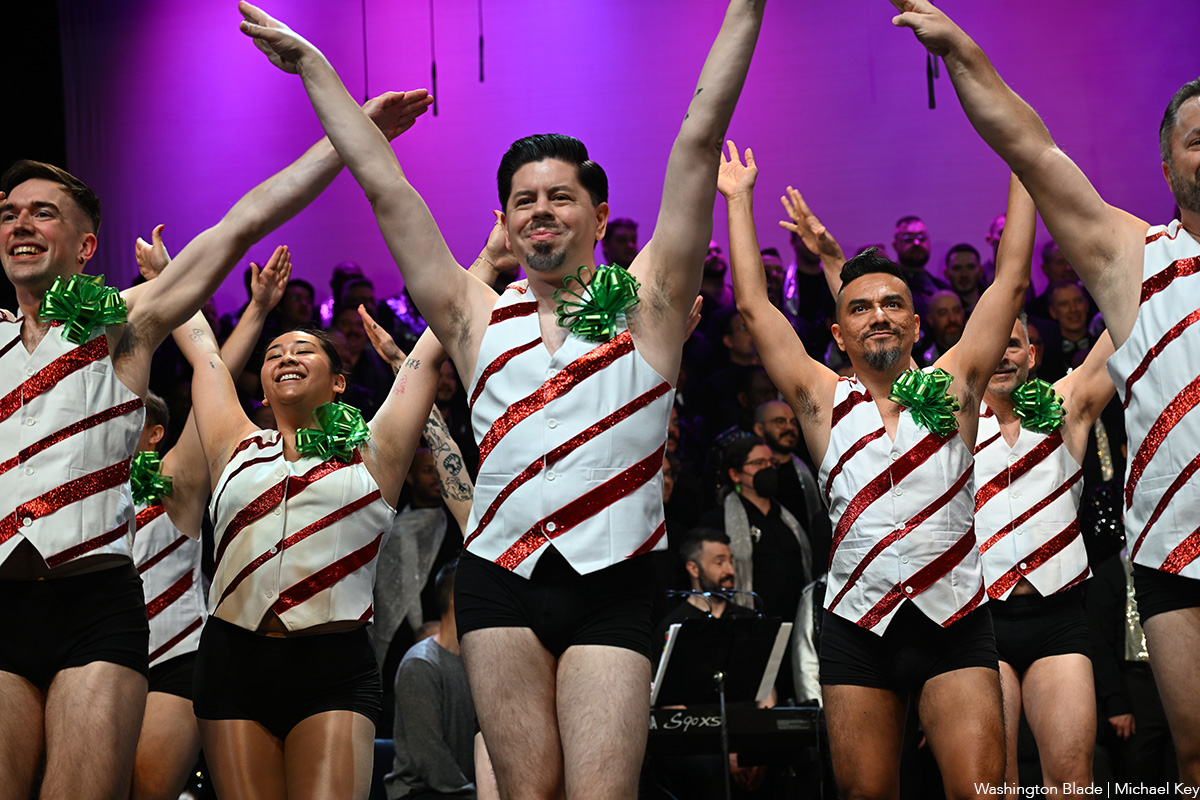


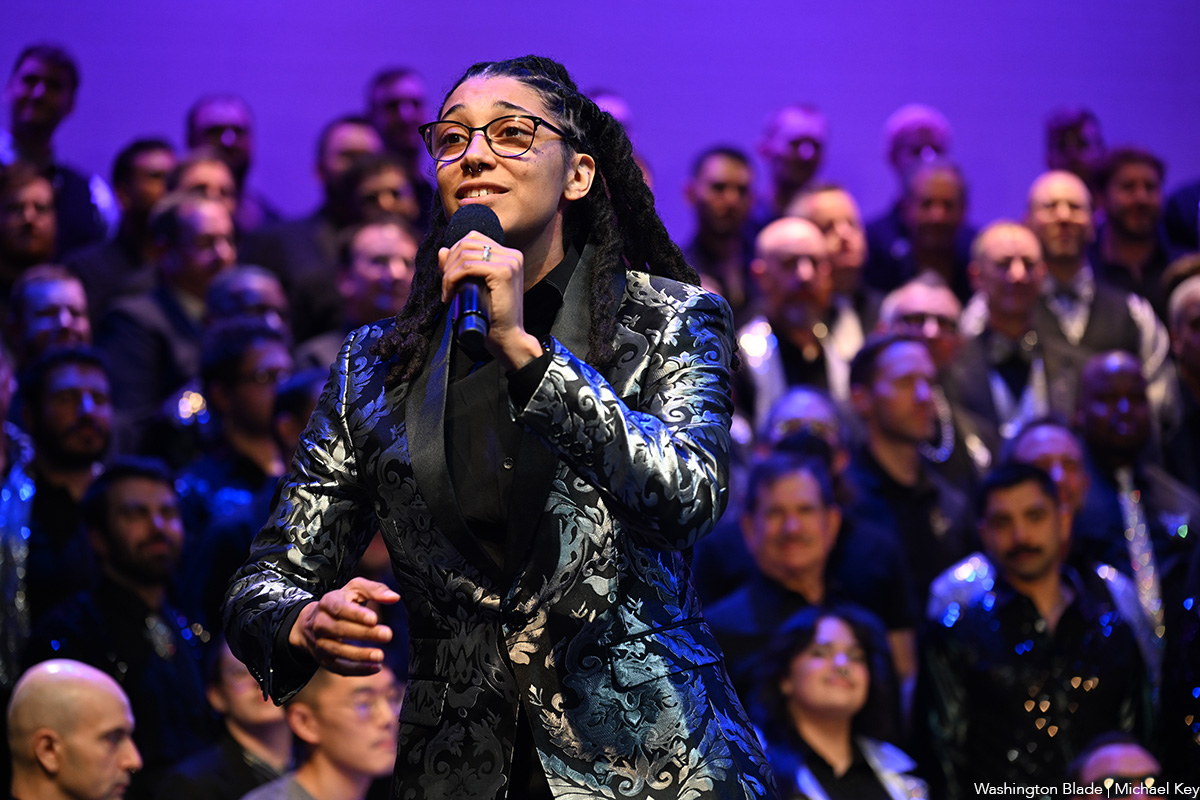
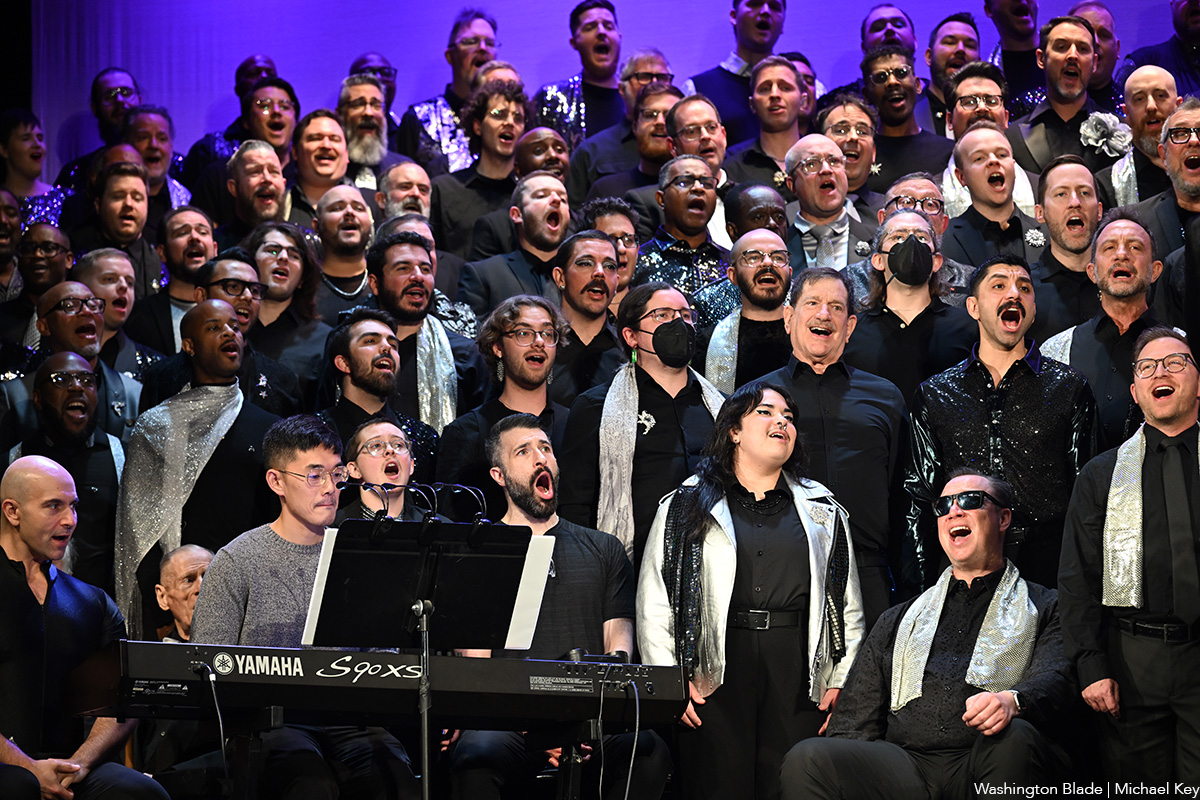






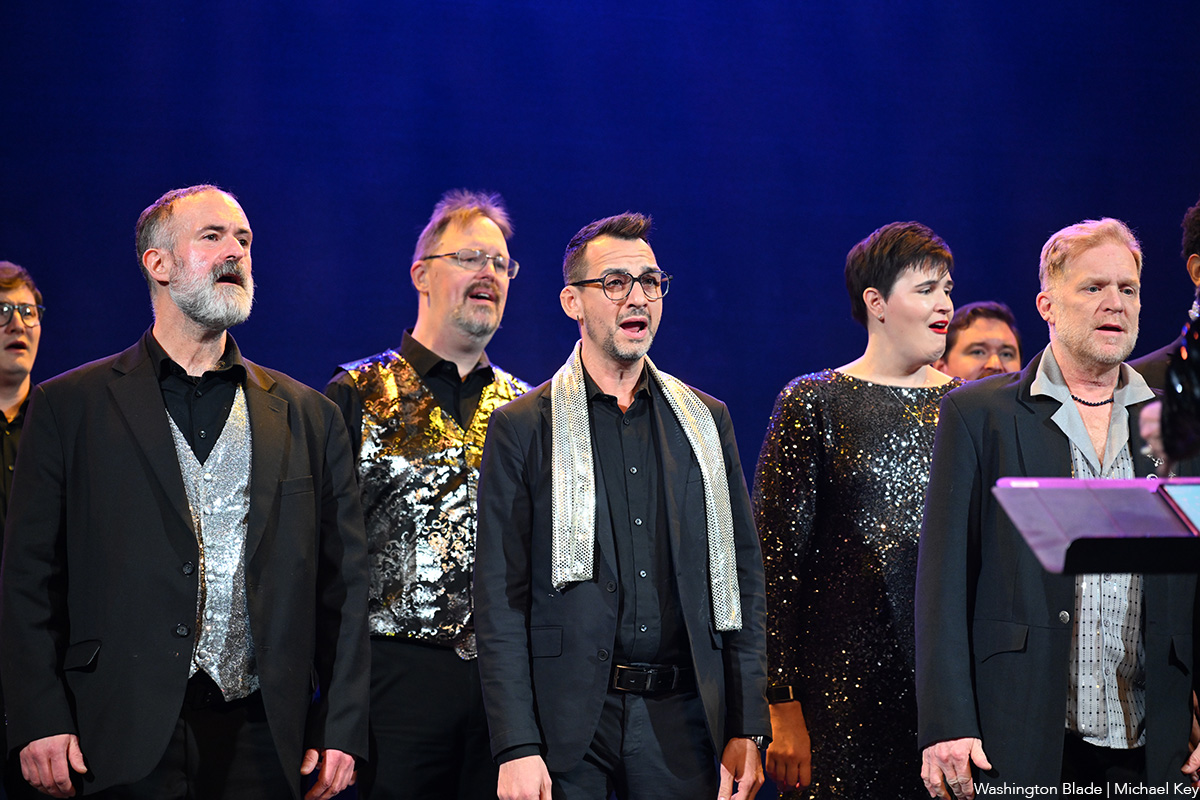
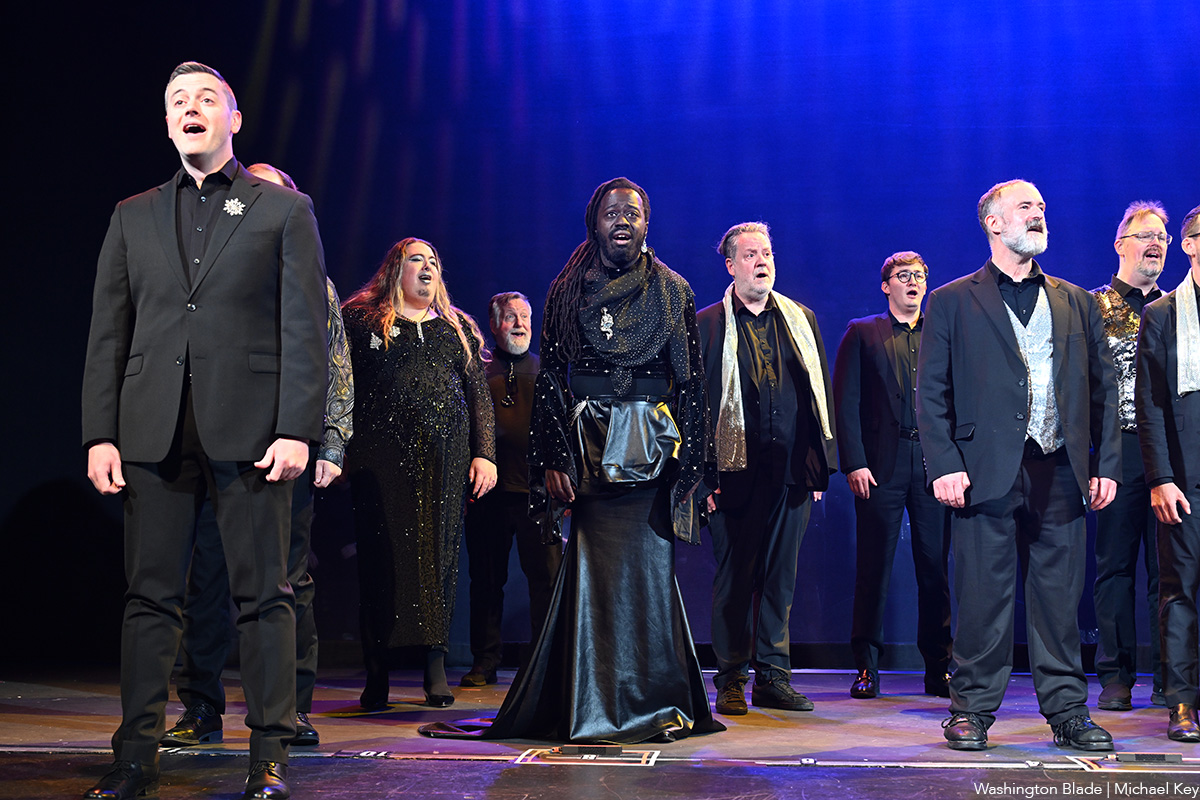
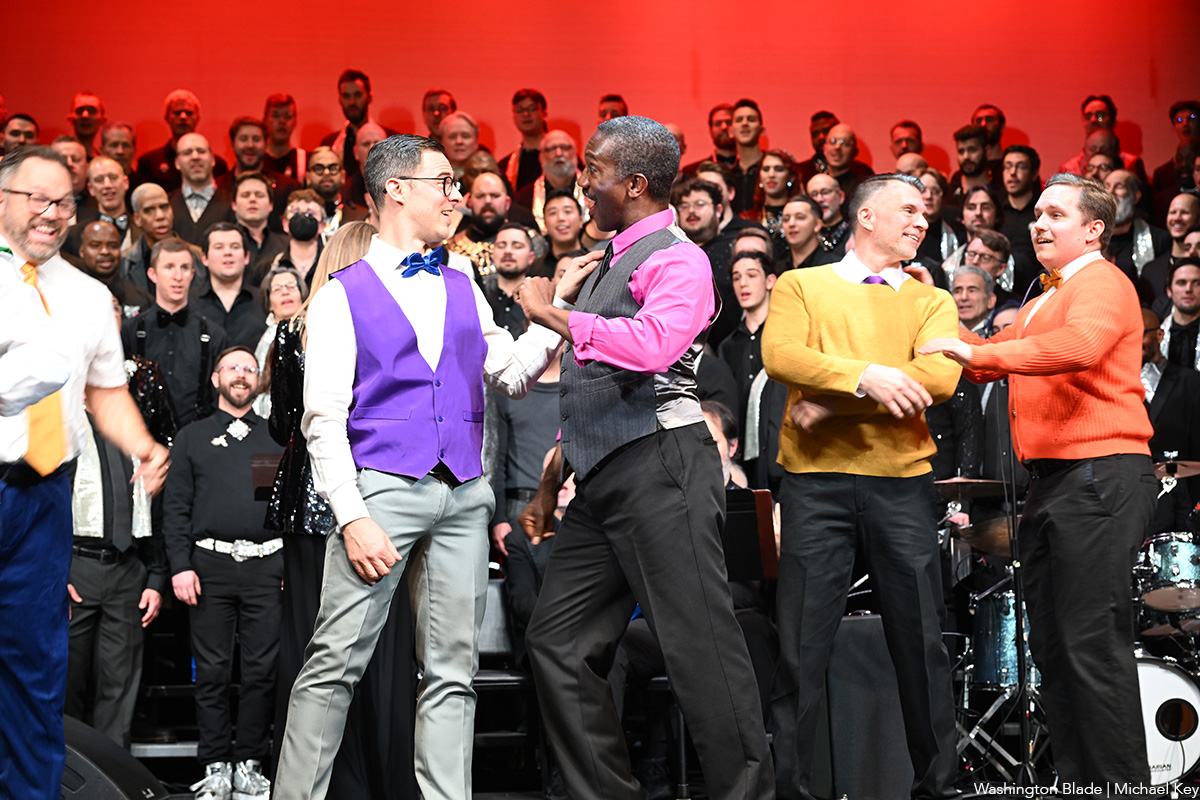
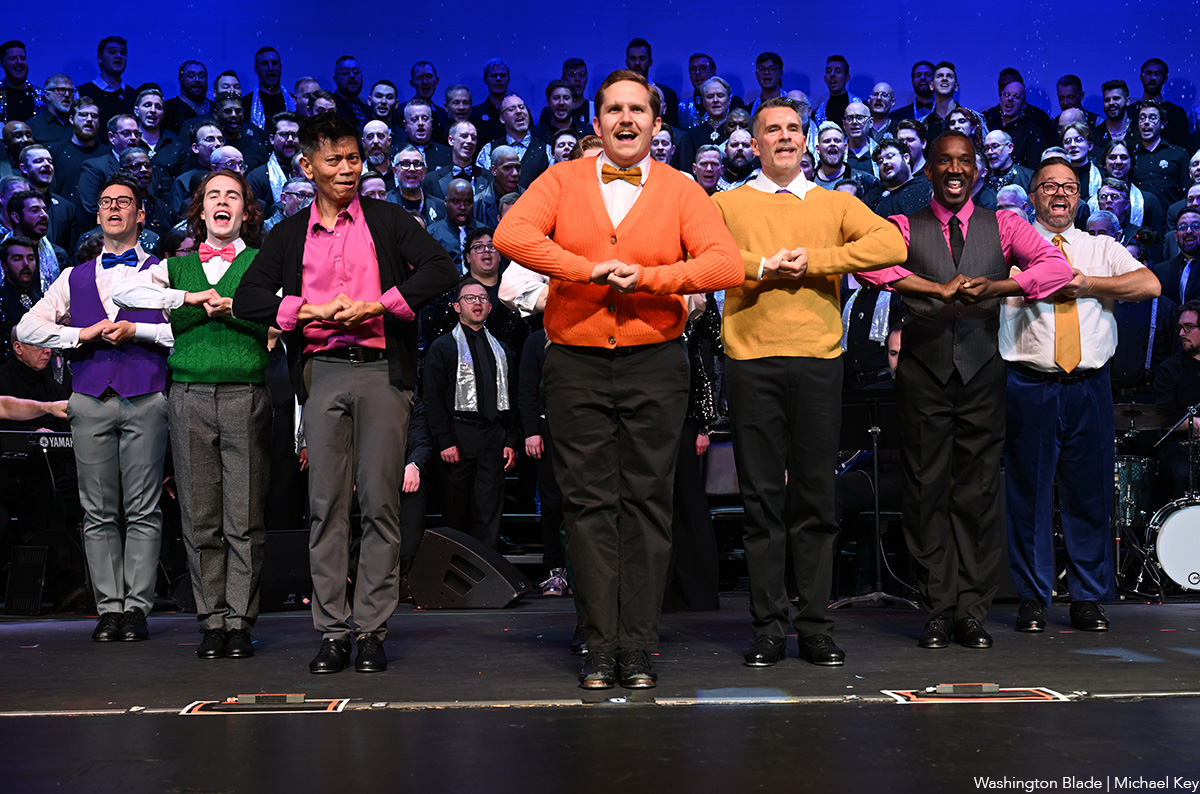

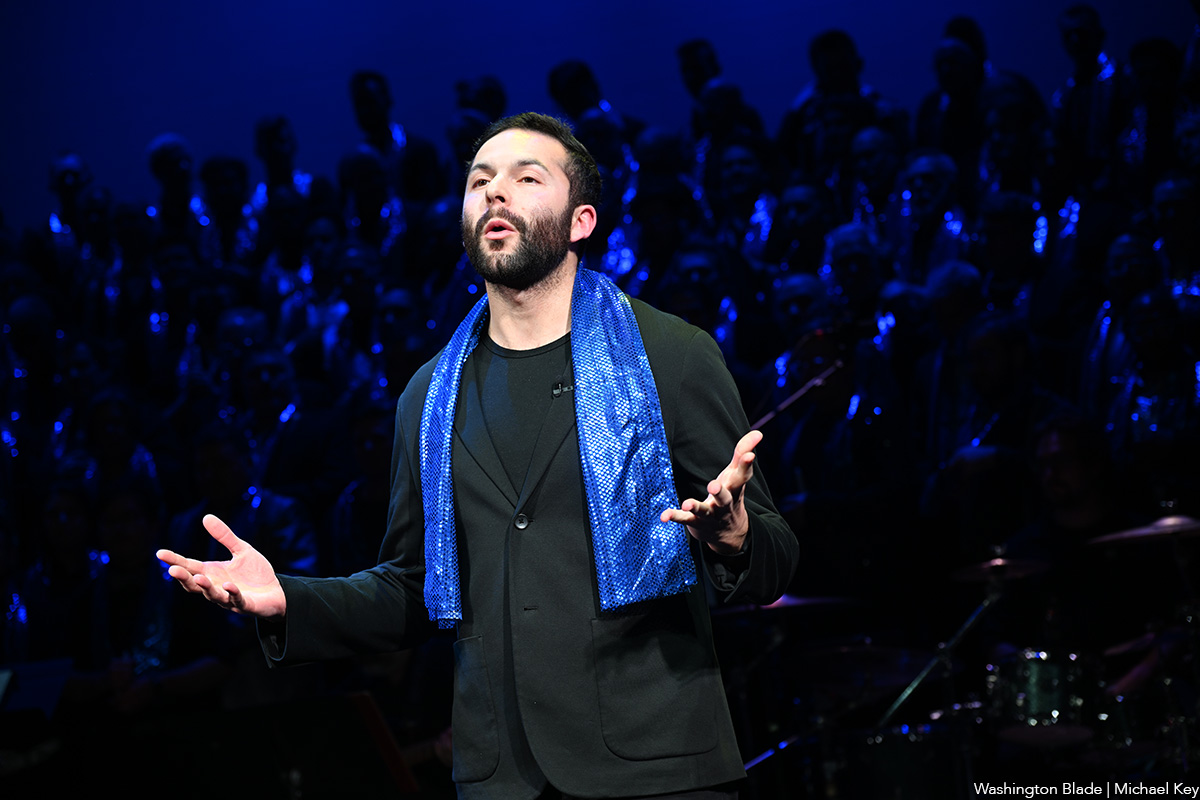
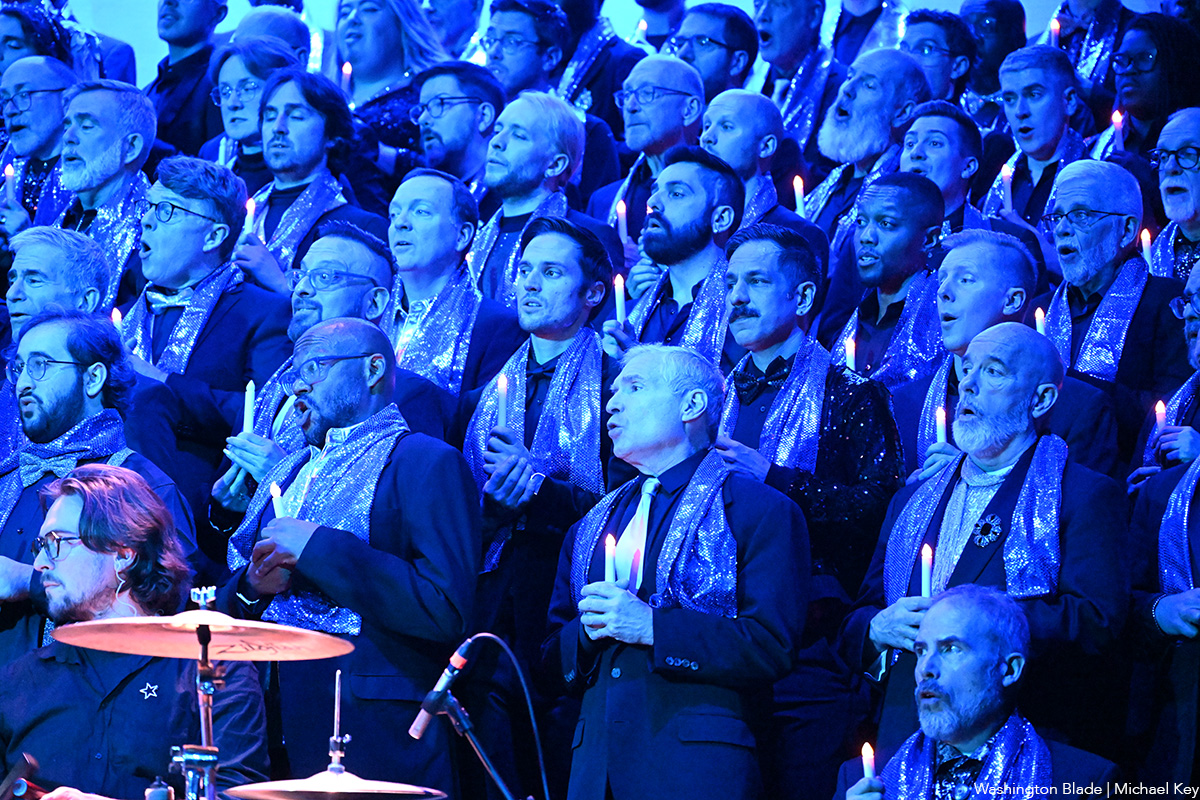
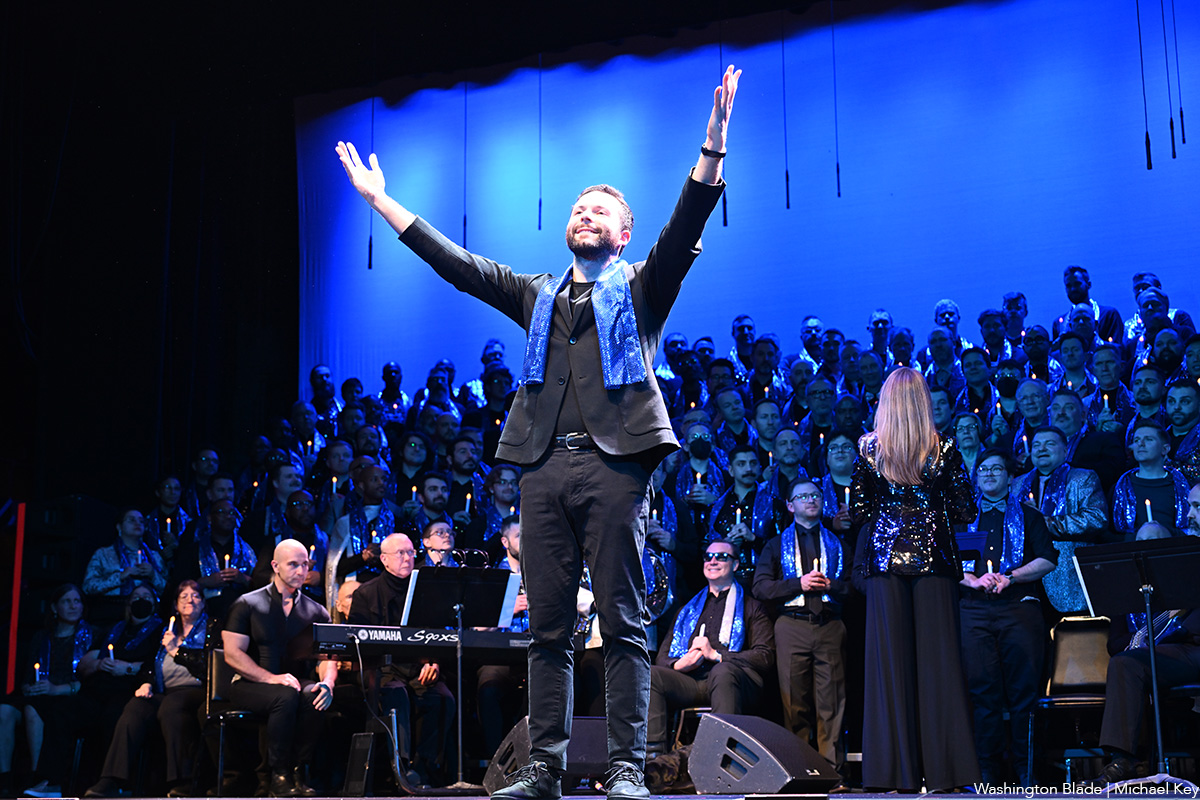


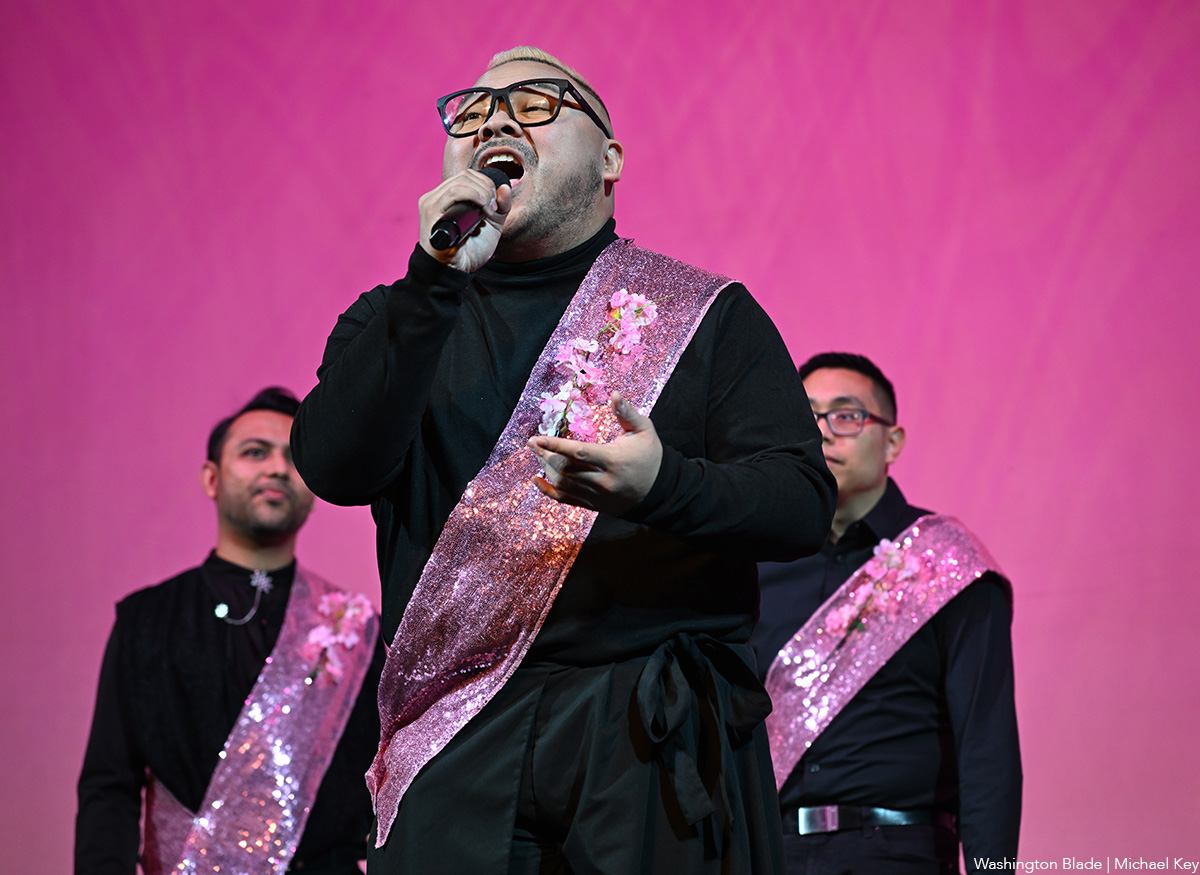

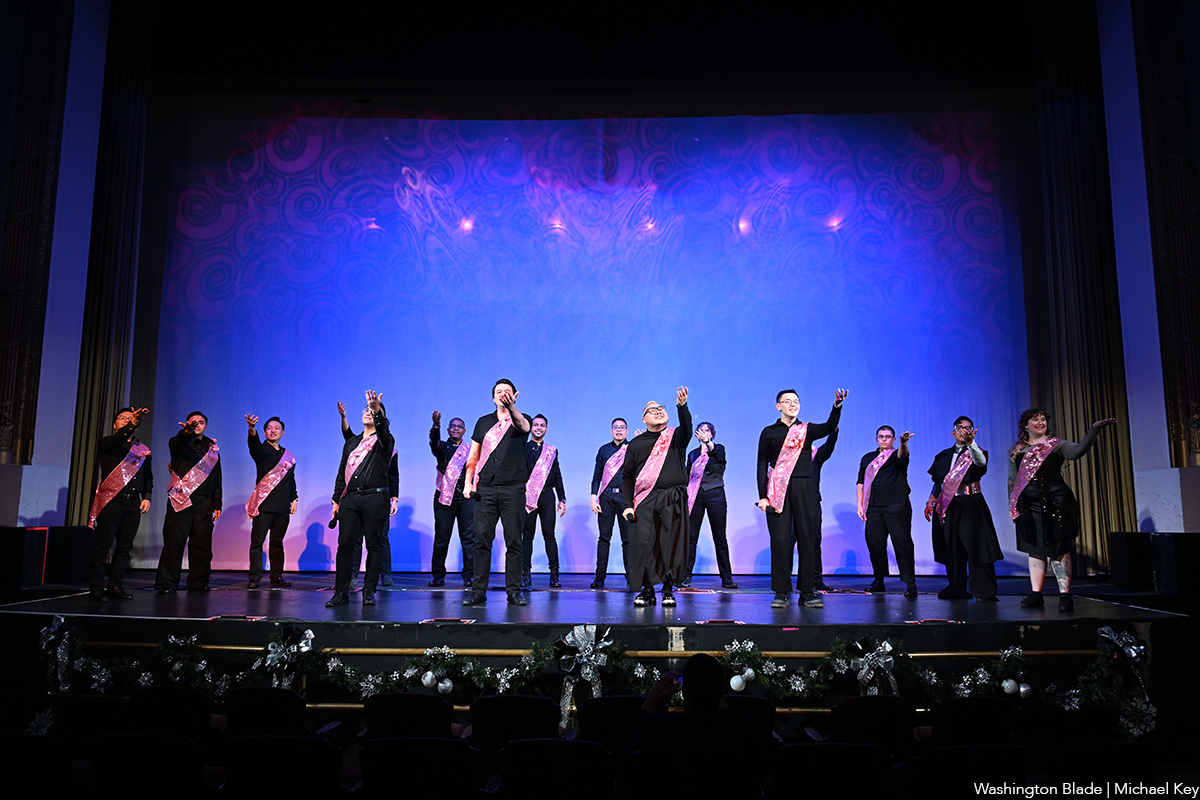
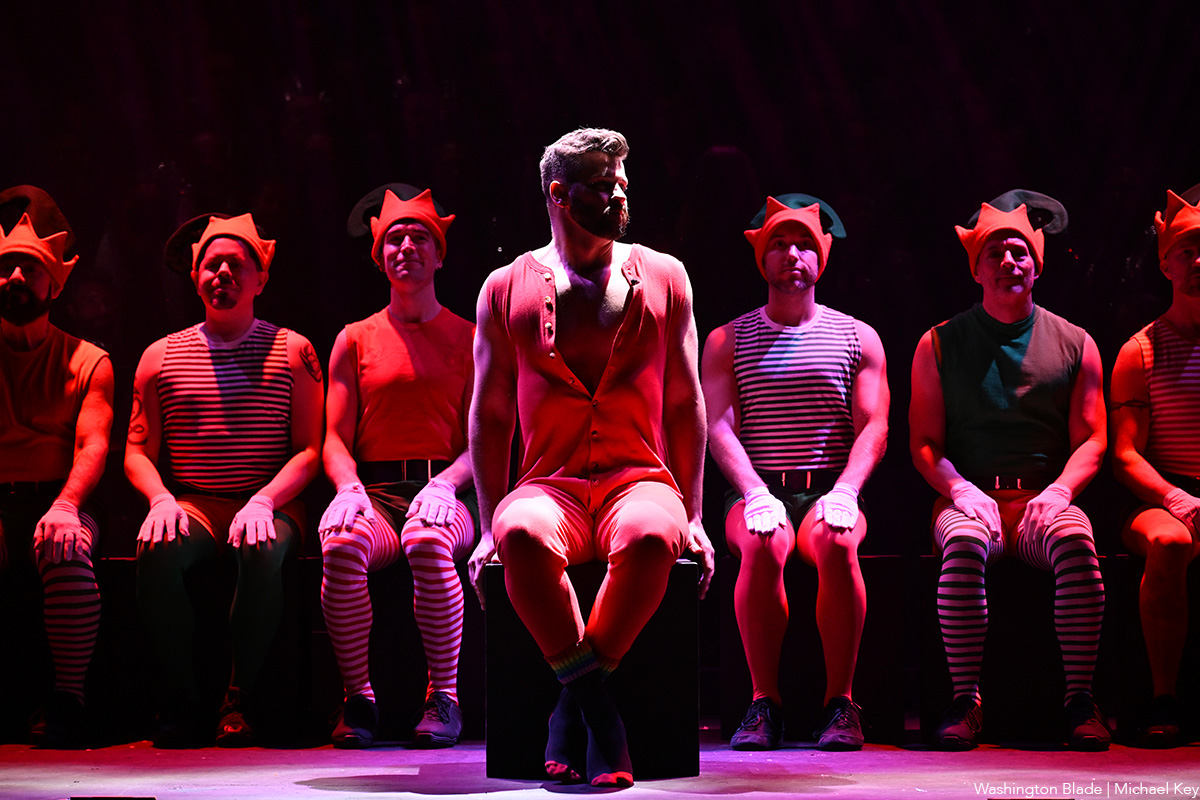

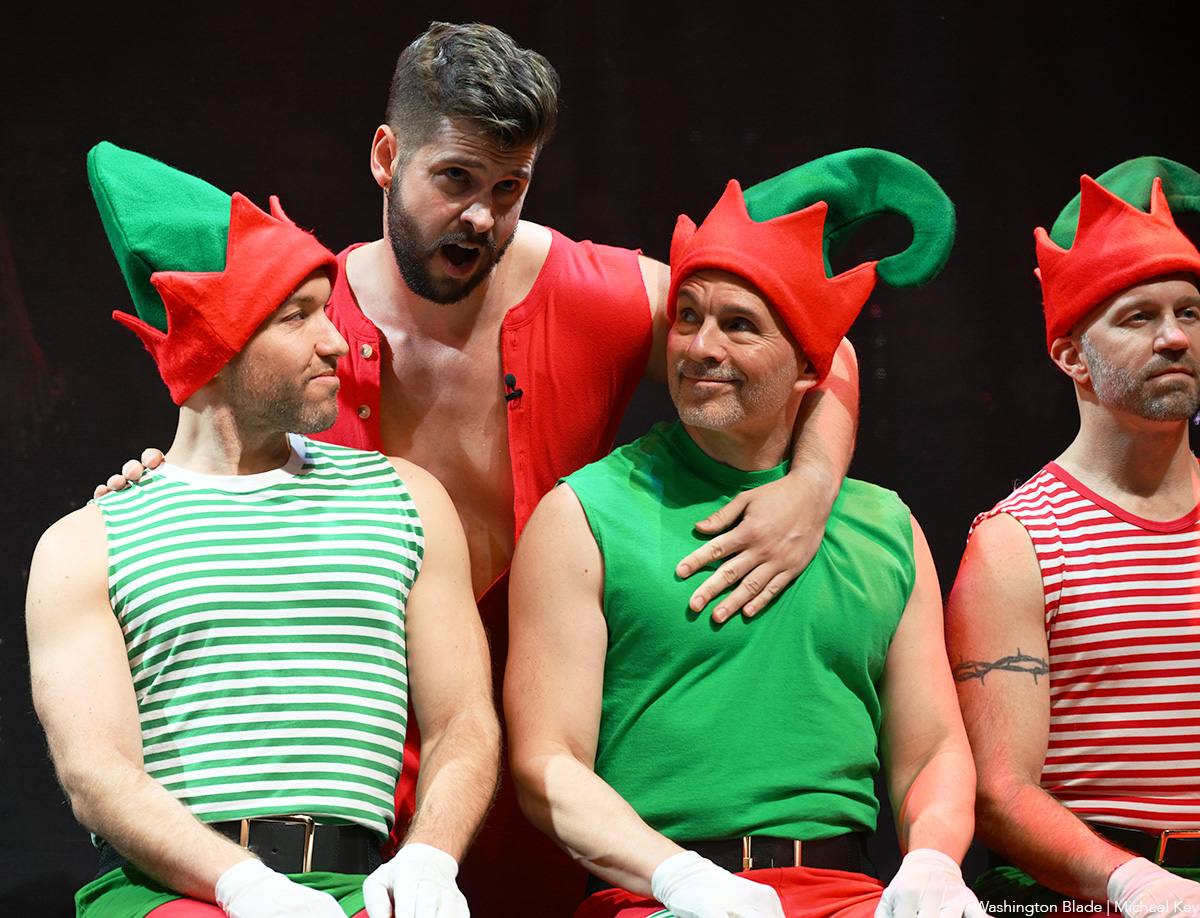

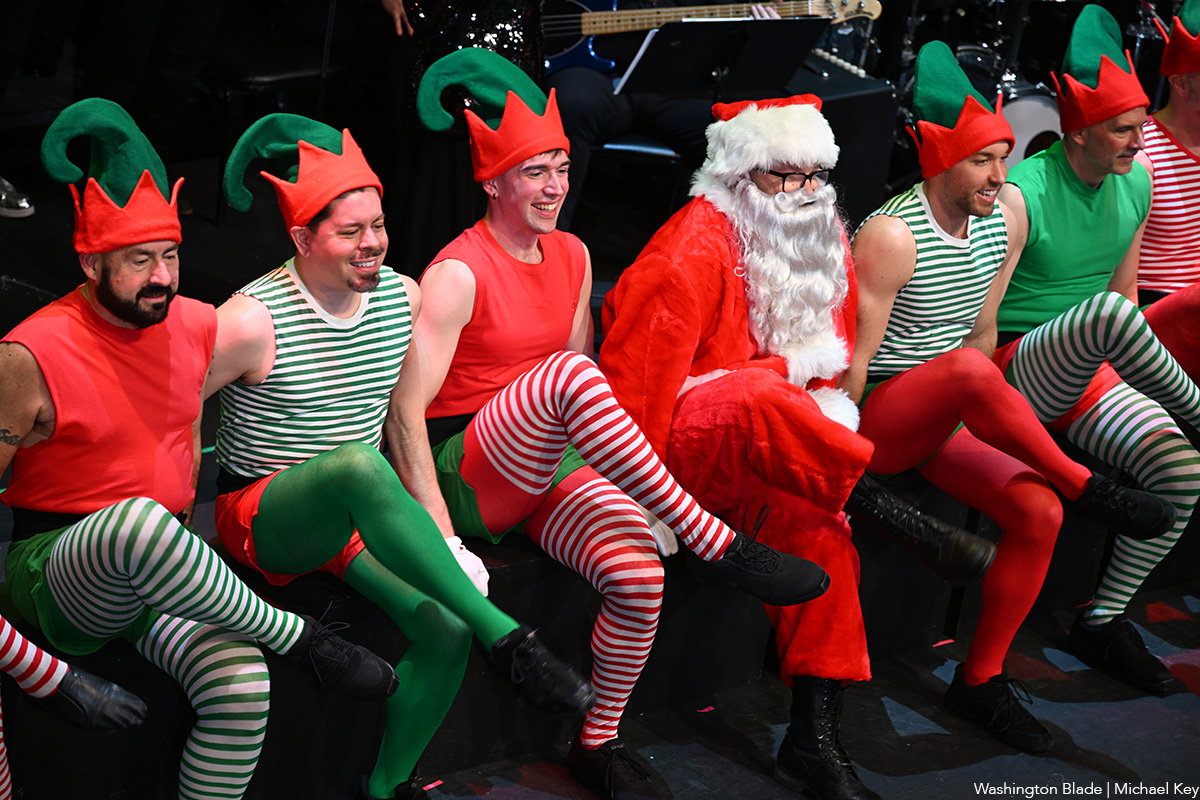
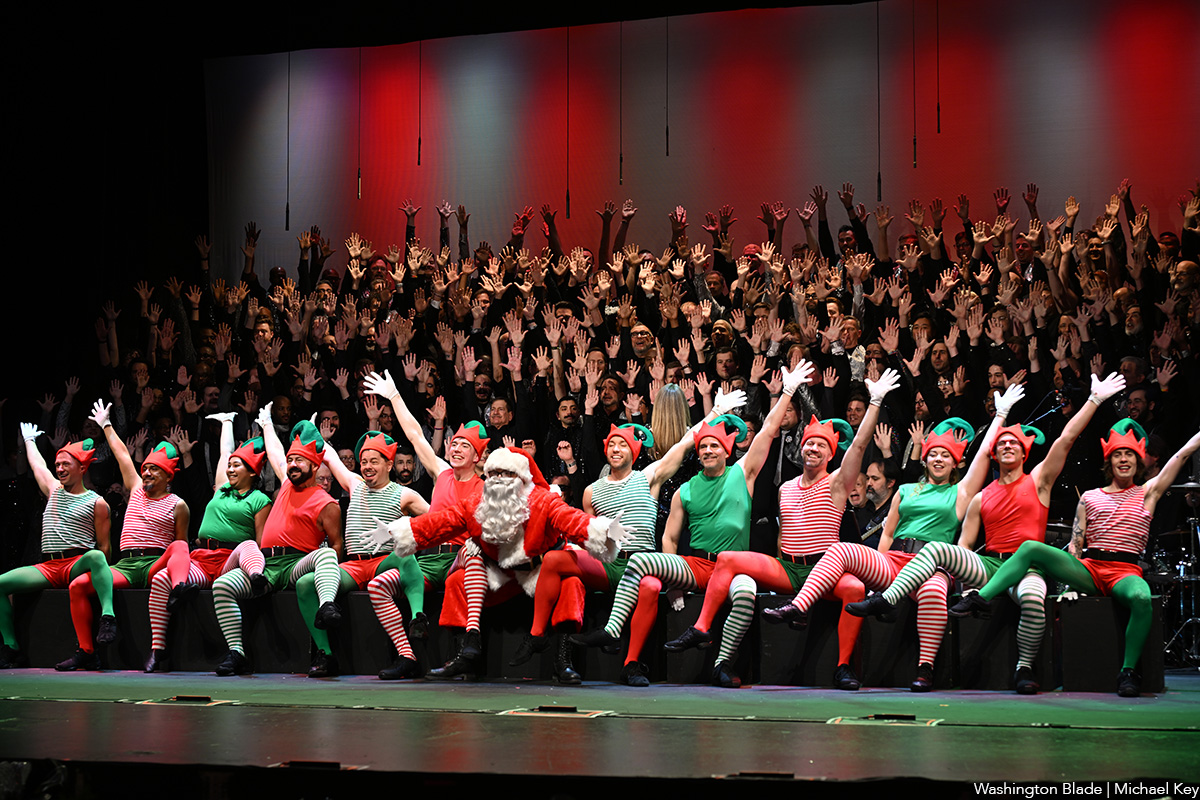

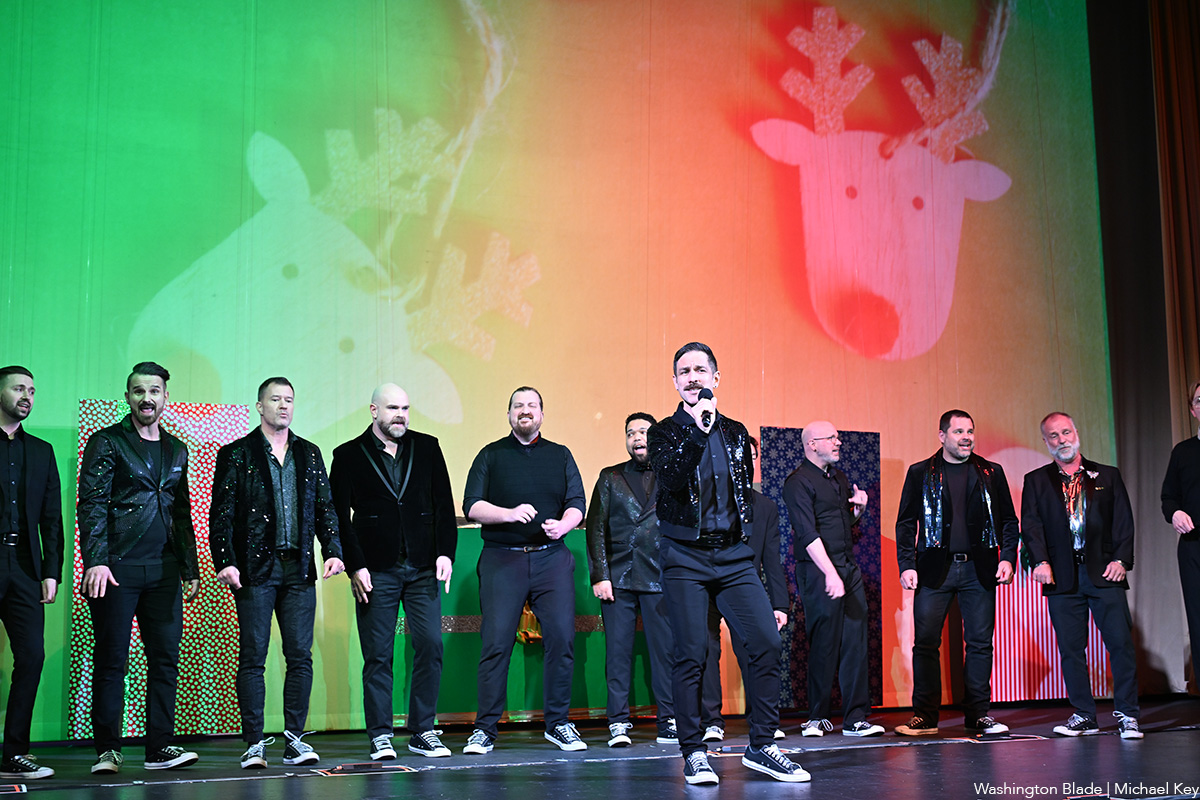
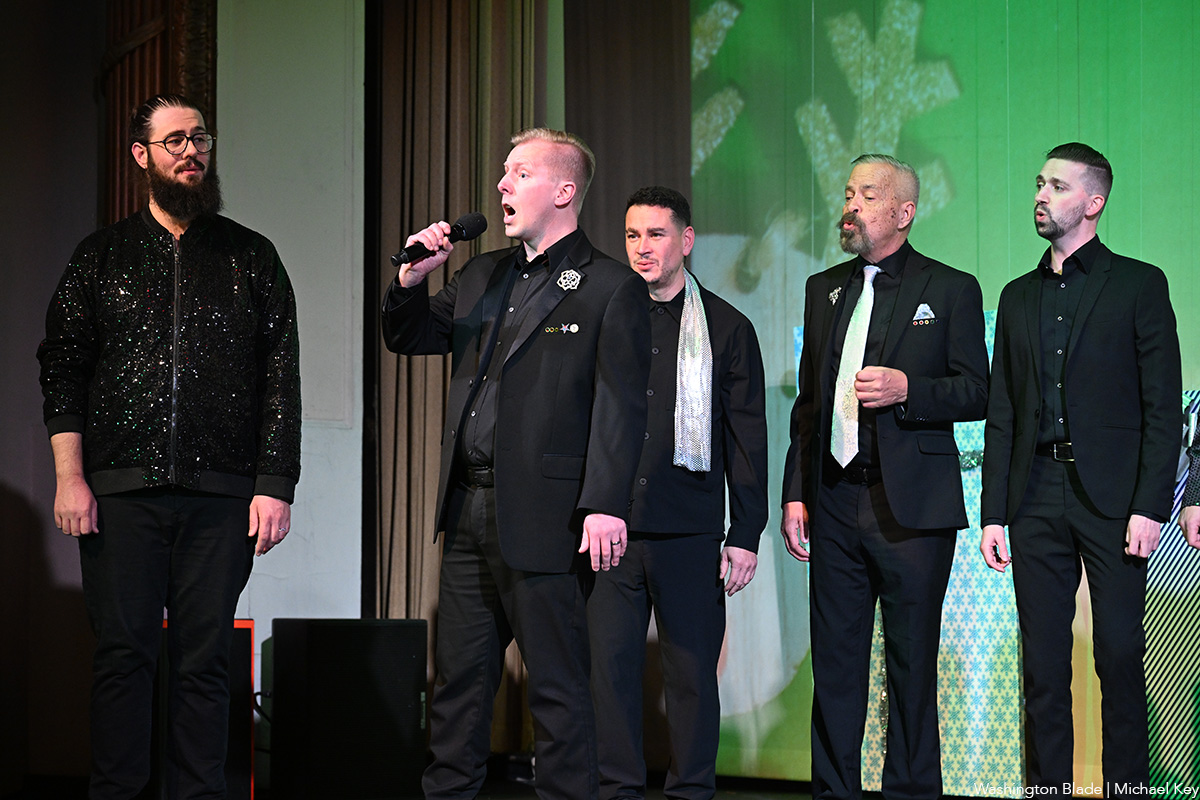
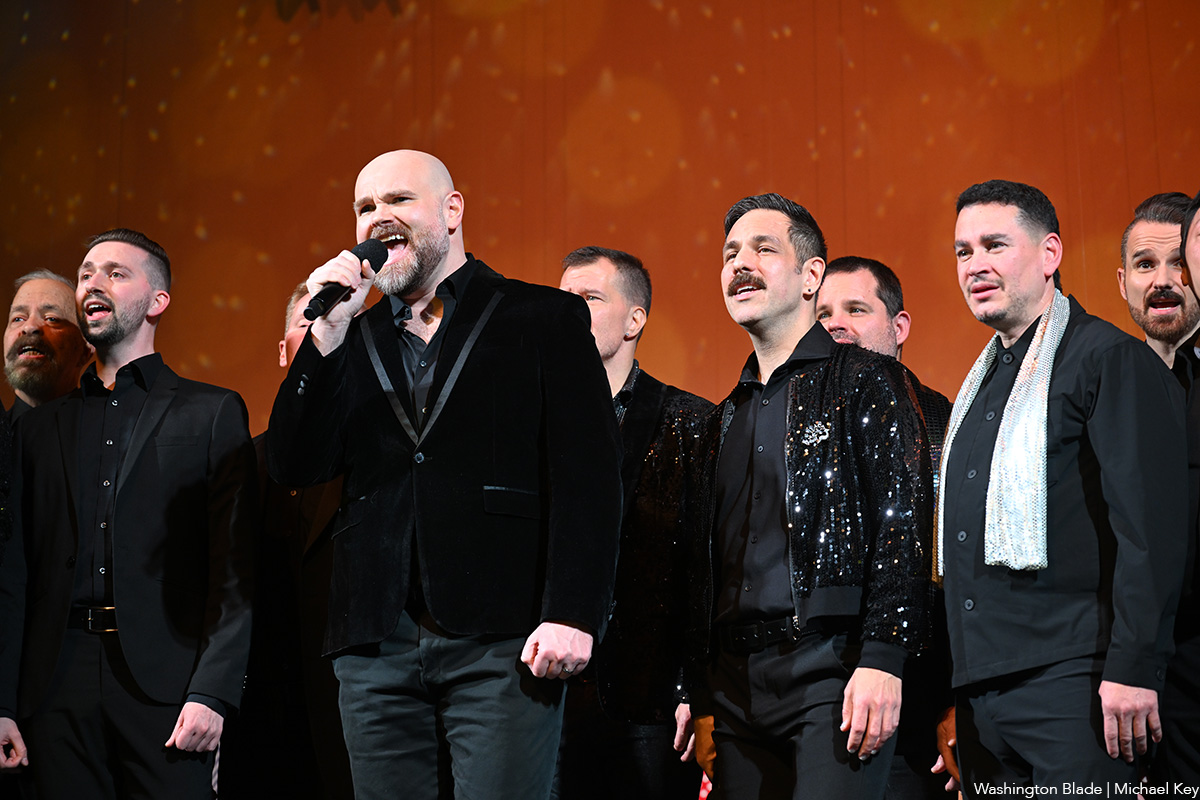
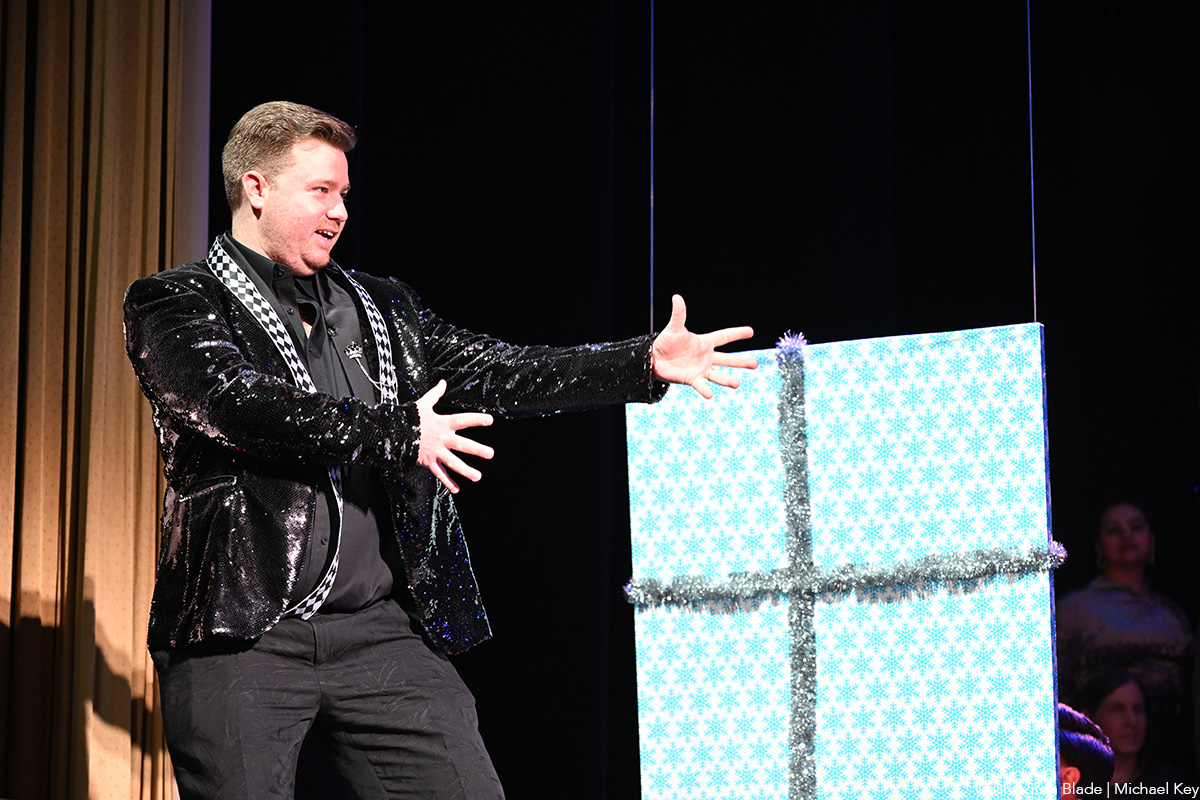
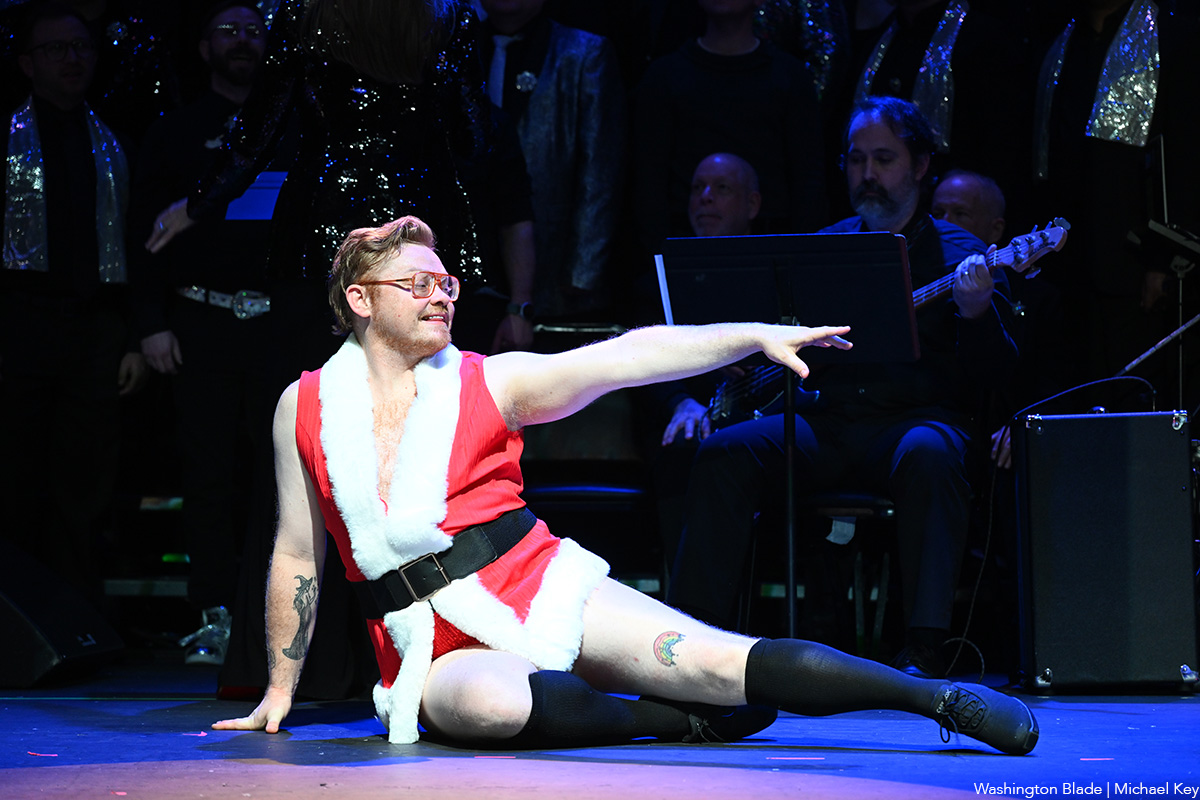
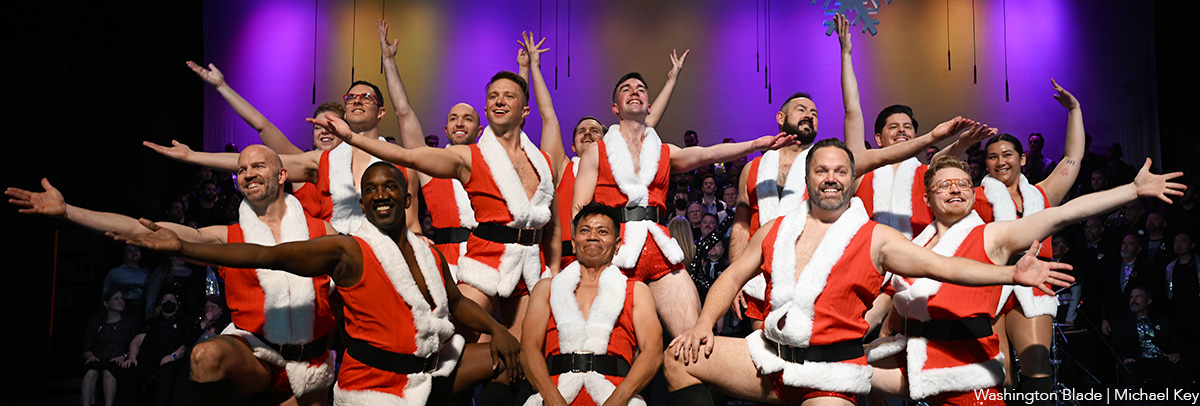
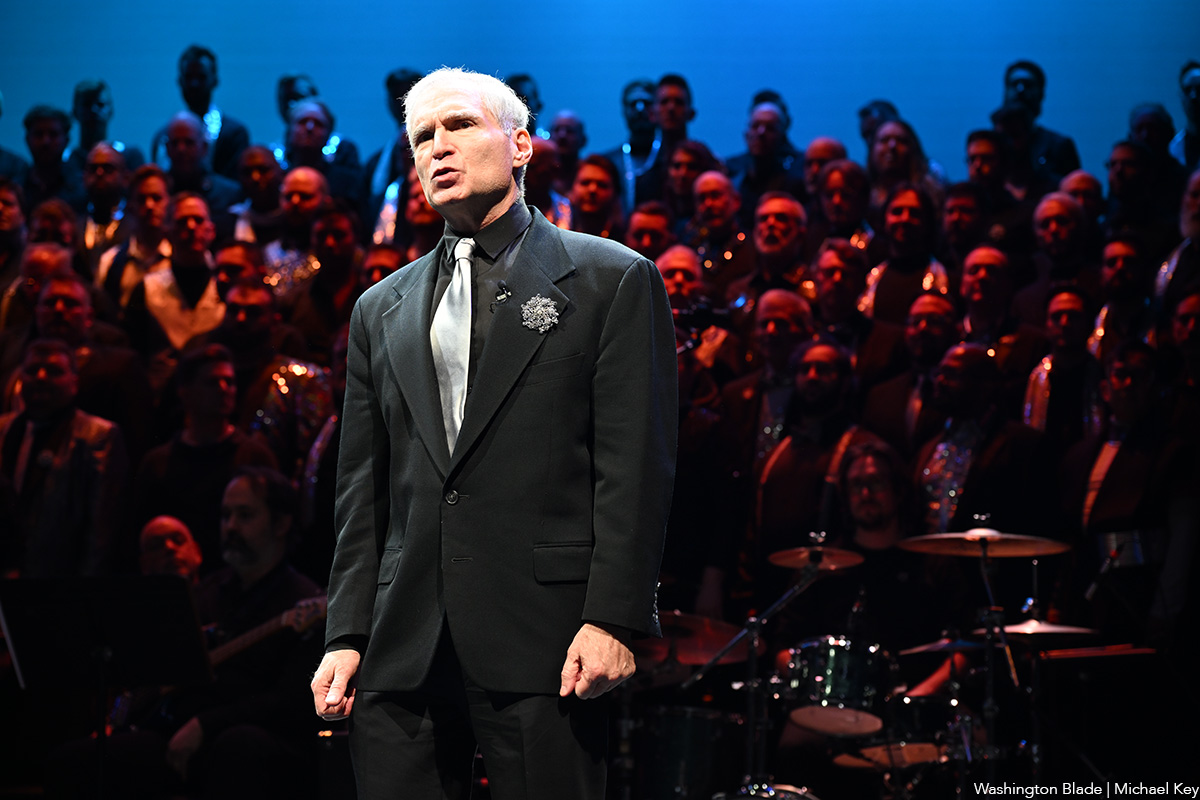


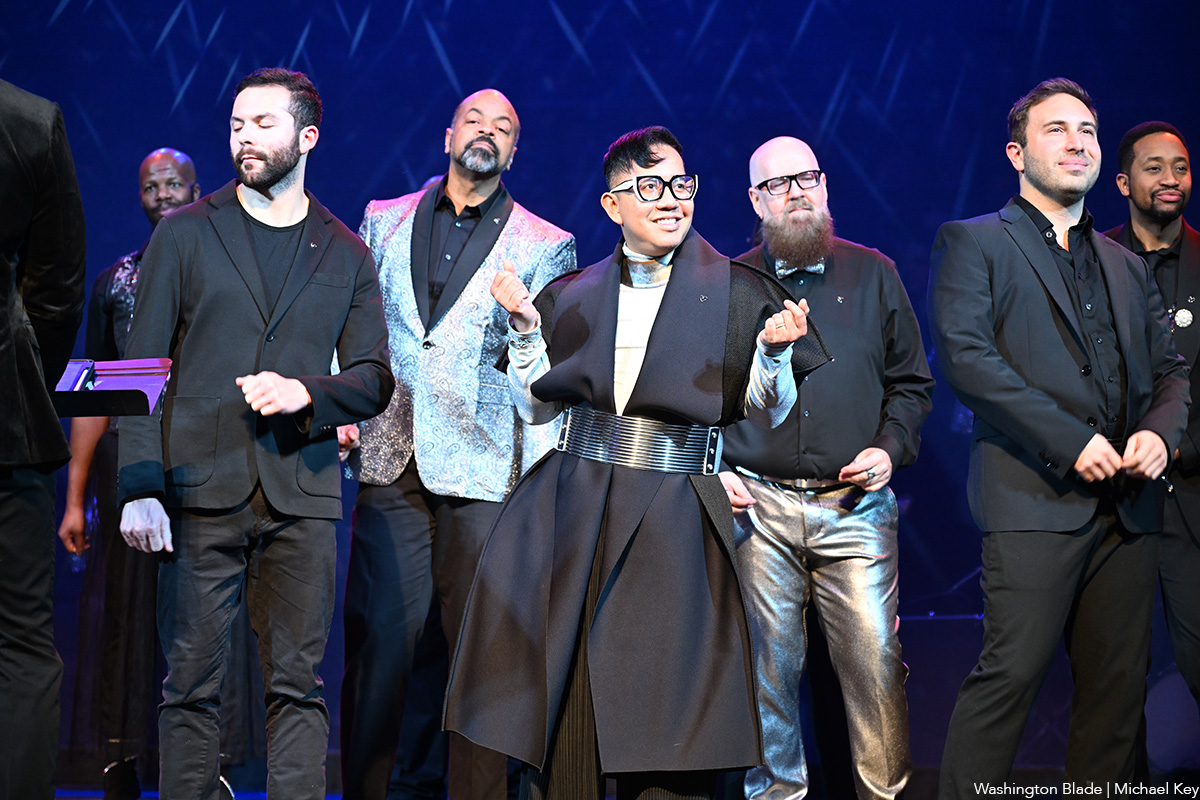


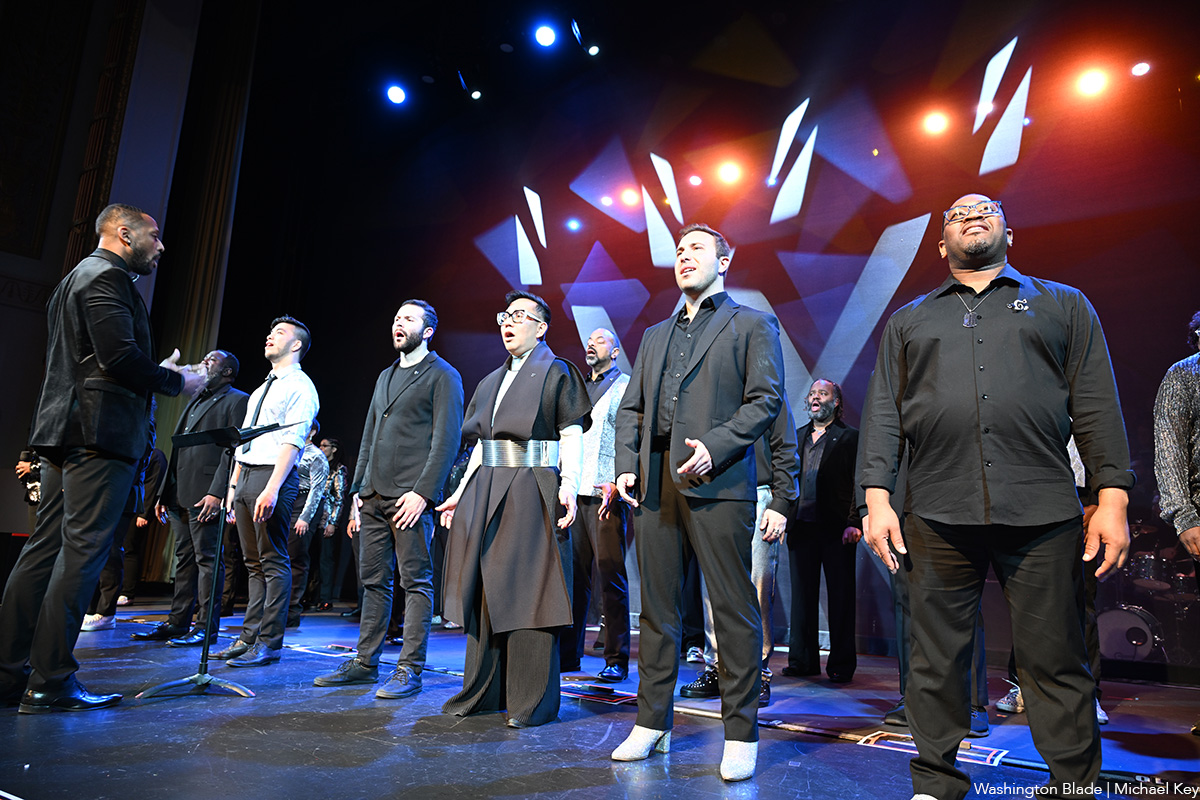


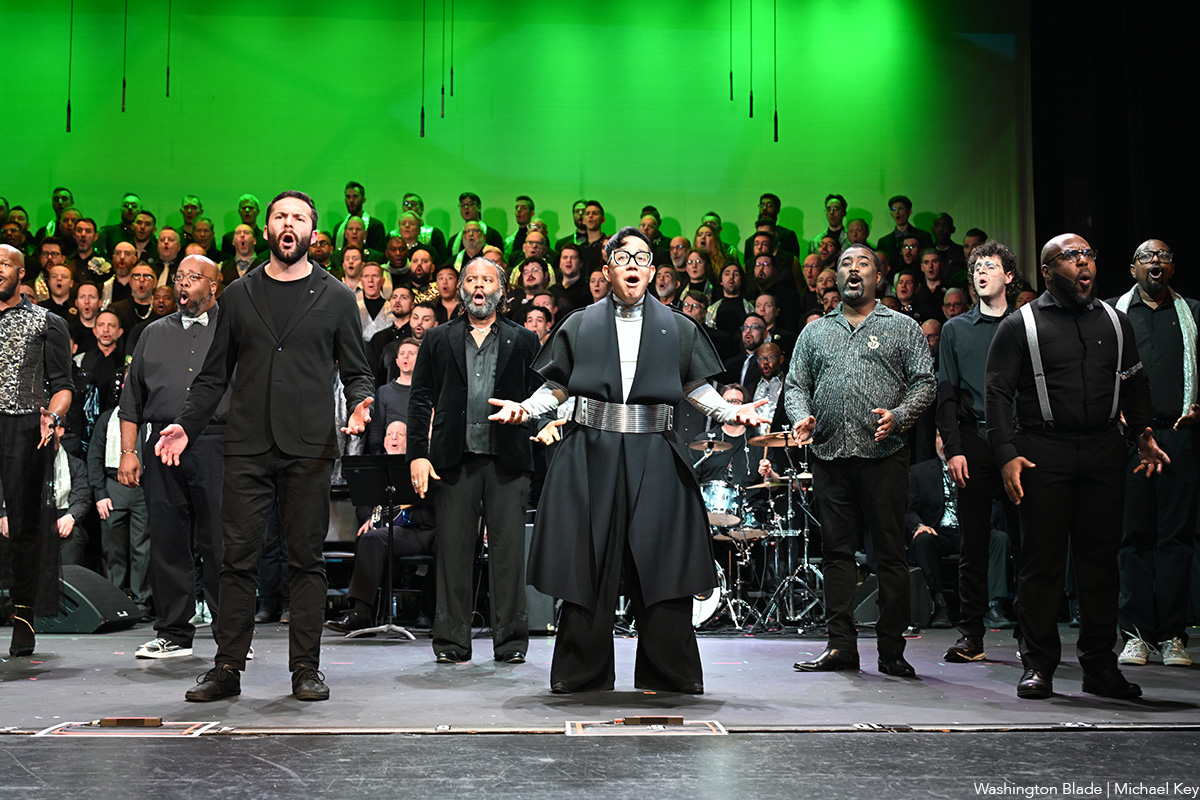
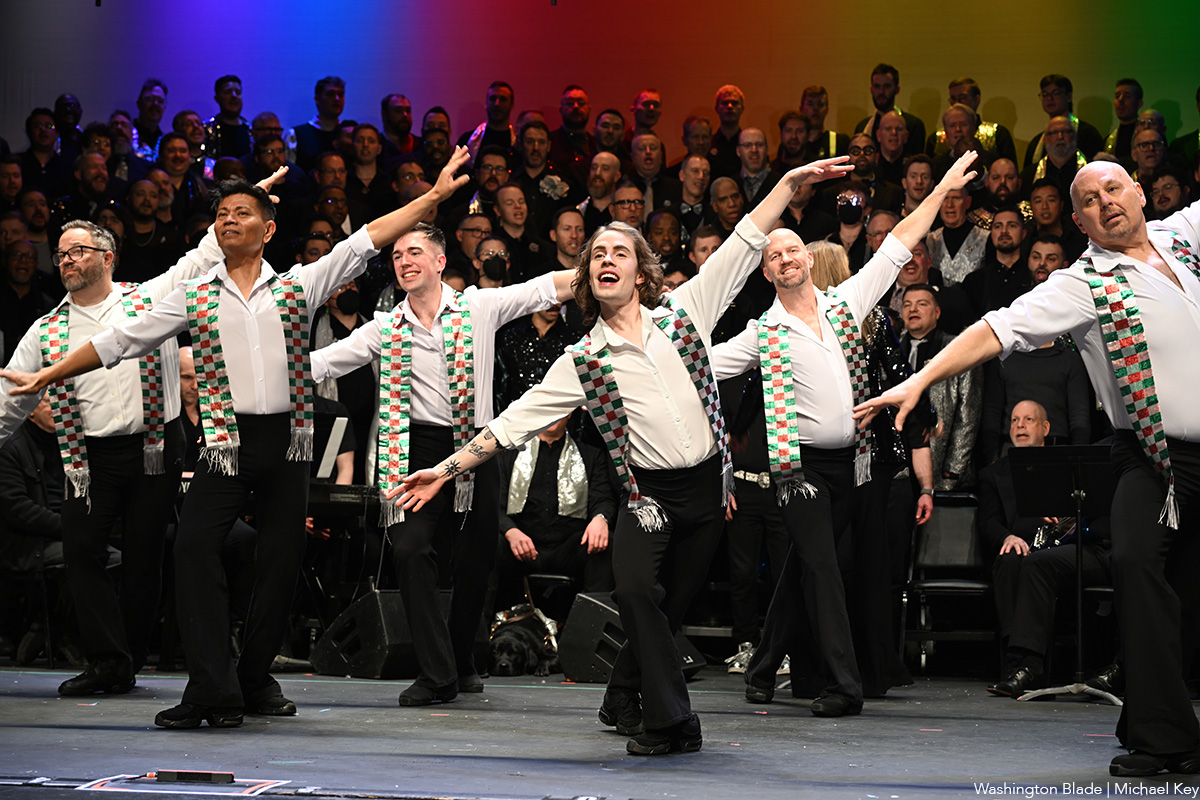

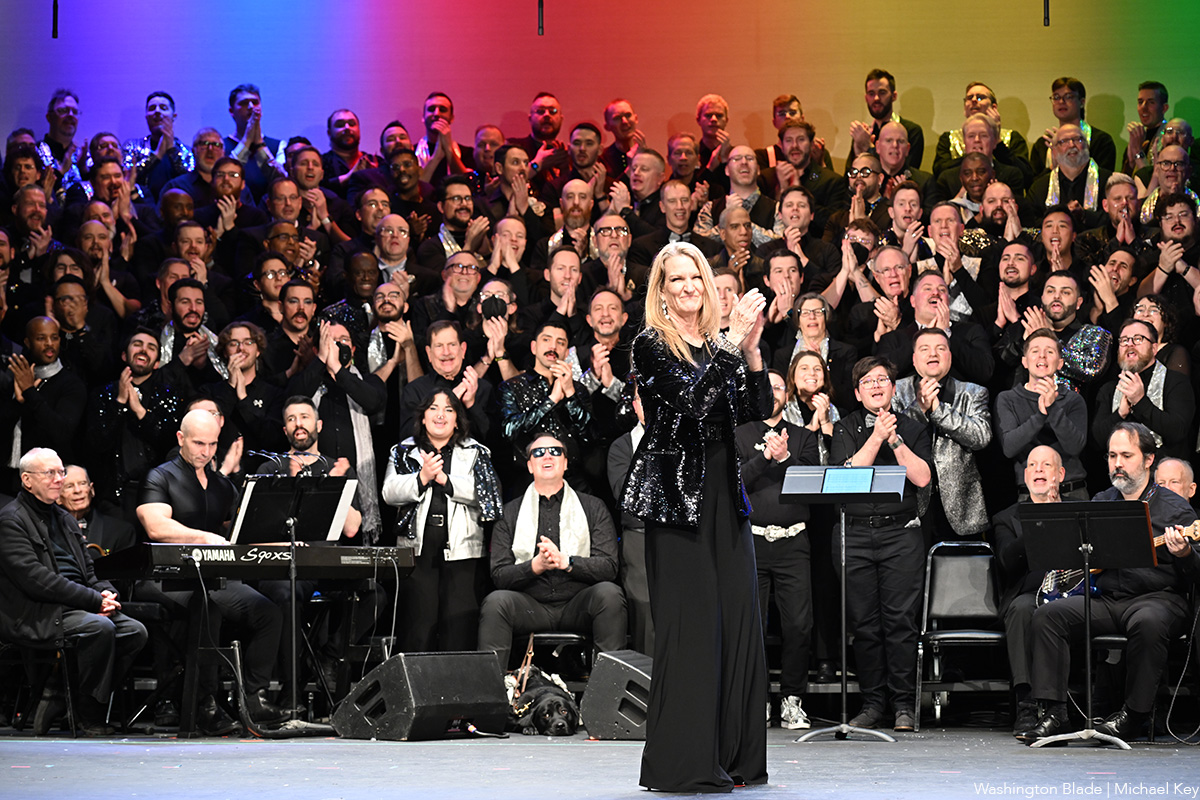
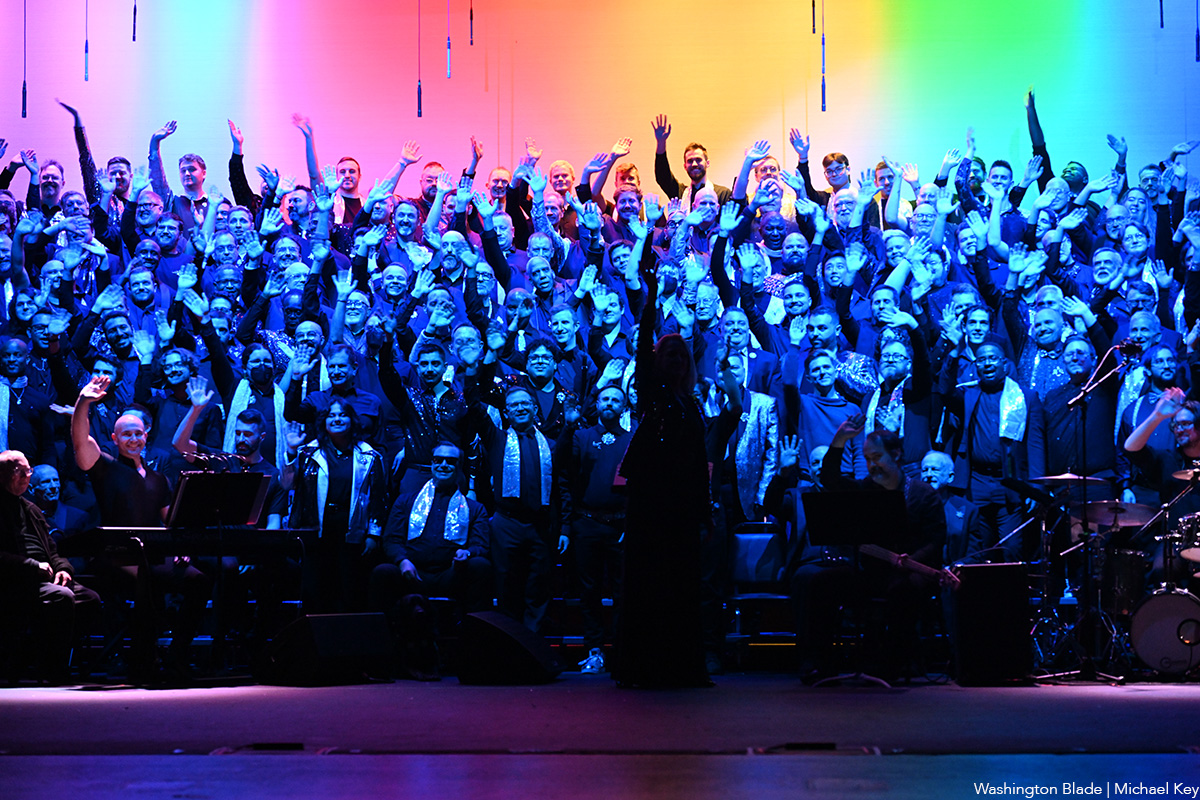

Santa will be very relieved.
You’ve taken most of the burden off him by making a list and checking it twice on his behalf. The gift-buying in your house is almost done – except for those few people who are just so darn hard to buy for. So what do you give to the person who has (almost) everything? You give them a good book, like maybe one of these.
Memoir and biography
The person who loves digging into a multi-level memoir will be happy unwrapping “Blessings and Disasters: A Story of Alabama” by Alexis Okeowo (Henry Holt). It’s a memoir about growing up Black in what was once practically ground zero for the Confederacy. It’s about inequality, it busts stereotypes, and yet it still oozes love of place. You can’t go wrong if you wrap it up with “Queen Mother: Black Nationalism, Reparations, and the Untold Story of Audley Moore” by Ashley D. Farmer (Pantheon). It’s a chunky book with a memoir with meaning and plenty of thought.
For the giftee on your list who loves to laugh, wrap up “In My Remaining Years” by Jean Grae (Flatiron Books). It’s part memoir, part comedy, a look back at the late-last-century, part how-did-you-get-to-middle-age-already? and all fun. Wrap it up with “Here We Go: Lessons for Living Fearlessly from Two Traveling Nanas” by Eleanor Hamby and Dr. Sandra Hazellip with Elisa Petrini (Viking). It’s about the adventures of two 80-something best friends who seize life by the horns – something your giftee should do, too.
If there’ll be someone at your holiday table who’s finally coming home this year, wrap up “How I Found Myself in the Midwest” by Steve Grove (Simon & Schuster). It’s the story of a Silicon Valley worker who gives up his job and moves with his family to Minnesota, which was once home to him. That was around the time the pandemic hit, George Floyd was murdered, and life in general had been thrown into chaos. How does someone reconcile what was with what is now? Pair it with “Homestand: Small Town Baseball and the Fight for the Soul of America” by Will Bardenwerper (Doubleday). It’s set in New York and but isn’t that small-town feel universal, no matter where it comes from?
Won’t the adventurer on your list be happy when they unwrap “I Live Underwater” by Max Gene Nohl (University of Wisconsin Press)? They will, when they realize that this book is by a former deep-sea diver, treasure hunter, and all-around daredevil who changed the way we look for things under water. Nohl died more than 60 years ago, but his never-before-published memoir is fresh and relevant and will be a fun read for the right person.
If celeb bios are your giftee’s thing, then look for “The Luckiest” by Kelly Cervantes (BenBella Books). It’s the Midwest-to-New-York-City story of an actress and her life, her marriage, and what she did when tragedy hit. Filled with grace, it’s a winner.
Your music lover won’t want to open any other gifts if you give “Only God Can Judge Me: The Many Lives of Tupac Shakur” by Jeff Pearlman (Mariner Books). It’s the story of the life, death, and everything in-between about this iconic performer, including the mythology that he left behind. Has it been three decades since Tupac died? It has, but your music lover never forgets. Wrap it up with “Point Blank (Quick Studies)” by Bob Dylan, text by Eddie Gorodetsky, Lucy Sante, and Jackie Hamilton (Simon & Schuster), a book of Dylan’s drawings and artwork. This is a very nice coffee-table size book that will be absolutely perfect for fans of the great singer and for folks who love art.
For the giftee who’s concerned with their fellow man, “The Lost and the Found: A True Story of Homelessness, Found Family and Second Chances” by Kevin Fagan (One Signal / Atria) may be the book to give. It’s a story of two “unhoused” people in San Francisco, one of the country’s wealthiest cities, and their struggles. There’s hope in this book, but also trouble and your giftee will love it.
For the person on your list who suffered loss this year, give “Pine Melody” by Stacey Meadows (Independently Published), a memoir of loss, grief, and healing while remembering the person gone.
LGBTQ fiction
For the mystery lover who wants something different, try “Crime Ink: Iconic,” edited by John Copenhaver and Salem West (Bywater Books), a collection of short stories inspired by “queer legends” and allies you know. Psychological thrillers, creepy crime, cozies, they’re here.
Novel lovers will want to curl up this winter with “Middle Spoon” by Alejandro Varela (Viking), a book about a man who appears to have it all, until his heart is broken and the fix for it is one he doesn’t quite understand and neither does anyone he loves.
LGBTQ studies – nonfiction
For the young man who’s struggling with issues of gender, “Before They Were Men” by Jacob Tobia (Harmony Books) might be a good gift this year. These essays on manhood in today’s world works to widen our conversations on the role politics and feminism play in understanding masculinity and how it’s time we open our minds.
If there’s someone on your gift list who had a tough growing-up (didn’t we all?), then wrap up “I’m Prancing as Fast as I Can” by Jon Kinnally (Permuted Press / Simon & Schuster). Kinnally was once an awkward kid but he grew up to be a writer for TV shows you’ll recognize. You can’t go wrong gifting a story like that. Better idea: wrap it up with “So Gay for You: Friendship, Found Family, & The Show That Started It All” by Leisha Hailey & Kate Moennig (St. Martin’s Press), a book about a little TV show that launched a BFF-ship.
Who doesn’t have a giftee who loves music? You sure do, so wrap up “The Secret Public: How Music Moved Queer Culture from the Margins to the Mainstream” by Jon Savage (Liveright). Nobody has to tell your giftee that queer folk left their mark on music, but they’ll love reading the stories in this book and knowing what they didn’t know.
The Blade may receive commissions from qualifying purchases made via this post.
Theater
Studio’s ‘Mother Play’ draws from lesbian playwright’s past
A poignant memory piece laced with sadness and wry laughs
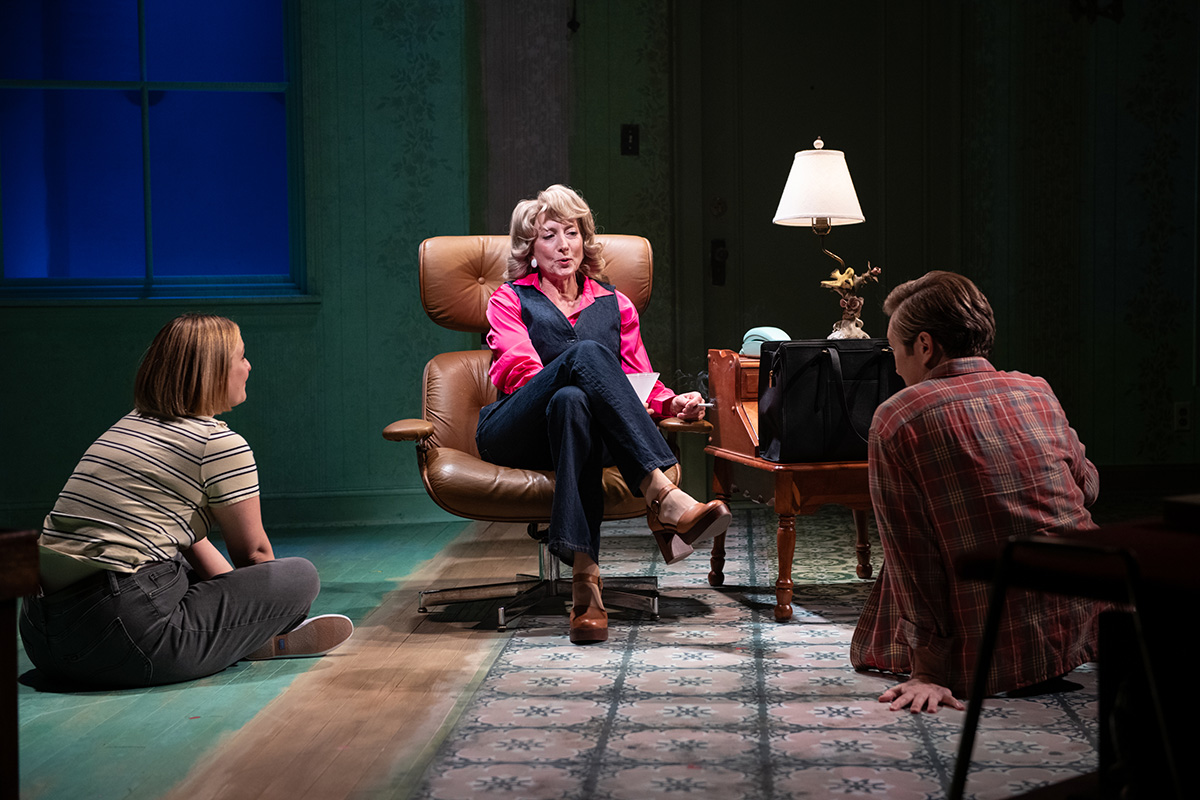
‘The Mother Play’
Through Jan. 4
Studio Theatre
1501 14th St., N.W.
$42 – $112
Studiotheatre.org
“The Mother Play” isn’t the first work by Pulitzer Prize-winning lesbian playwright Paula Vogel that draws from her past. It’s just the most recent.
Currently enjoying an extended run at Studio Theatre, “The Mother Play,” (also known as “The Mother Play: A Play in Five Evictions,” or more simply, “Mother Play”) is a 90-minute powerful and poignant memory piece laced with sadness and wry laughs.
The mother in question is Phyllis Herman (played exquisitely by Kate Eastwood Norris), a divorced government secretary bringing up two children under difficult circumstances. When we meet them it’s 1964 and the family is living in a depressing subterranean apartment adjacent to the building’s trash room.
Phyllis isn’t exactly cut out for single motherhood; an alcoholic chain-smoker with two gay offspring, Carl and Martha, both in their early teens, she seems beyond her depth.
In spite (or because of) the challenges, things are never dull in the Herman home. Phyllis is warring with landlords, drinking, or involved in some other domestic intrigue. At the same time, Carl is glued to books by authors like Jane Austen, and queer novelist Lytton Strachey, while Martha is charged with topping off mother’s drinks, not a mean feat.
Despite having an emotionally and physically withholding parent, adolescent Martha is finding her way. Fortunately, she has nurturing older brother Carl (the excellent Stanley Bahorek) who introduces her to queer classics like “The Well of Loneliness” by Radclyffe Hall, and encourages Martha to pursue lofty learning goals.
Zoe Mann’s Martha is just how you might imagine the young Vogel – bright, searching, and a tad awkward.
As the play moves through the decades, Martha becomes an increasingly confident young lesbian before sliding comfortably into early middle age. Over time, her attitude toward her mother becomes more sympathetic. It’s a convincing and pleasing performance.
Phyllis is big on appearances, mainly her own. She has good taste and a sharp eye for thrift store and Goodwill finds including Chanel or a Von Furstenberg wrap dress (which looks smashing on Eastwood Norris, by the way), crowned with the blonde wig of the moment.
Time and place figure heavily into Vogel’s play. The setting is specific: “A series of apartments in Prince George’s and Montgomery County from 1964 to the 21st century, from subbasement custodial units that would now be Section 8 housing to 3-bedroom units.”
Krit Robinson’s cunning set allows for quick costume and prop changes as decades seamlessly move from one to the next. And if by magic, projection designer Shawn Boyle periodically covers the walls with scurrying roaches, a persistent problem for these renters.
Margot Bordelon directs with sensitivity and nuance. Her take on Vogel’s tragicomedy hits all the marks.
Near the play’s end, there’s a scene sometimes referred to as “The Phyllis Ballet.” Here, mother sits onstage silently in front of her dressing table mirror. She is removed of artifice and oozes a mixture of vulnerability but not without some strength. It’s longish for a wordless scene, but Bordelon has paced it perfectly.
When Martha arranges a night of family fun with mom and now out and proud brother at Lost and Found (the legendary D.C. gay disco), the plan backfires spectacularly. Not long after, Phyllis’ desire for outside approval resurfaces tenfold, evidenced by extreme discomfort when Carl, her favorite child, becomes visibly ill with HIV/AIDS symptoms.
Other semi-autobiographical plays from the DMV native’s oeuvre include “The Baltimore Waltz,” a darkly funny, yet moving piece written in memory of her brother (Carl Vogel), who died of AIDS in 1988. The playwright additionally wrote “How I Learned to Drive,” an acclaimed play heavily inspired by her own experiences with sexual abuse as a teenager.
“The Mother Play” made its debut on Broadway in 2024, featuring Jessica Lange in the eponymous role, earning her a Tony Award nomination.
Like other real-life matriarch inspired characters (Mary Tyrone, Amanda Wingfield, Violet Weston to name a few) Phyllis Herman seems poised to join that pantheon of complicated, women.

